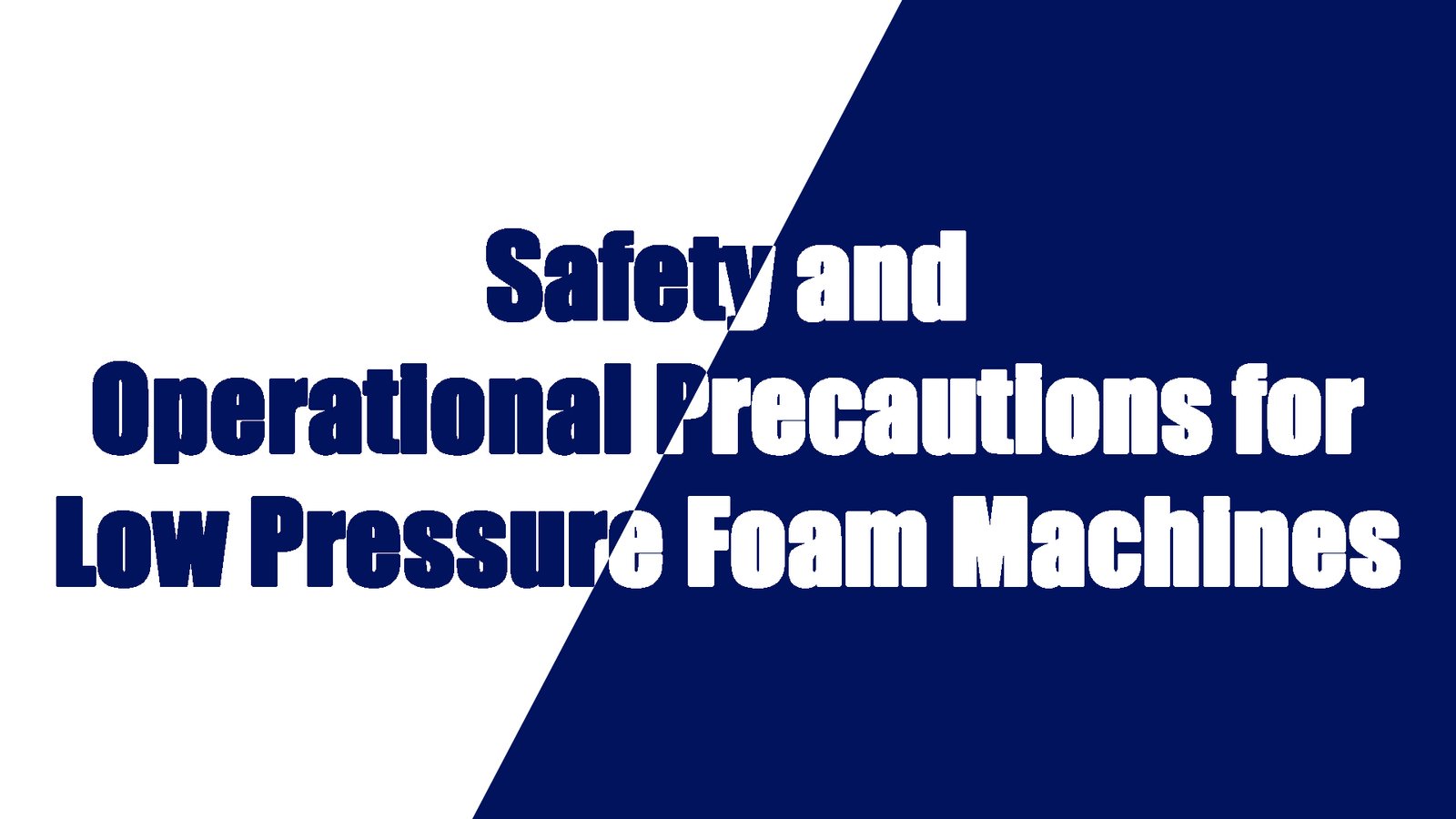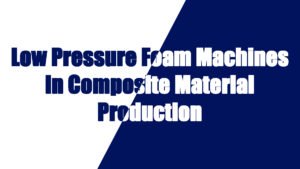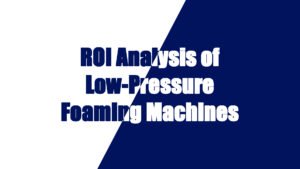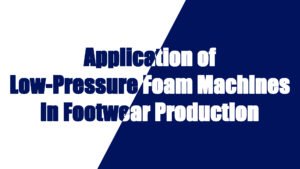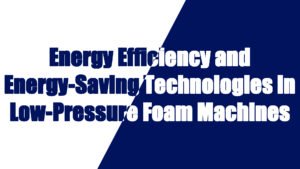Low pressure foaming machines are essential equipment in the production of polyurethane foam, widely used in industries like sự thi công, automotive, nội thất, Và đóng gói. With advancements in automation technology, the performance and operational efficiency of low pressure foaming machines have significantly improved. However, the safety and operational precautions of these machines remain crucial for ensuring safe operations and uninterrupted production. In this article, we will delve into the safety aspects of low pressure foaming machines, highlight key operational precautions, and suggest best practices for training and technical support to ensure safe and efficient operation.
1. Pressure Control: Preventing Overload and Leakage Risks
Pressure control is one of the most critical safety factors in low pressure foaming machines. Incorrect pressure settings can lead to machine overloads, damage, or even catastrophic failures like explosions or leaks.
Pressure Settings: Each low pressure foaming machine operates within a specific pressure range. Before operation, operators should carefully review the machine’s manual and ensure that the pressure is set correctly according to the machine’s specifications. Exceeding the recommended pressure can lead to damage and reduced operational efficiency.
Pressure Monitoring: The machine should be equipped with reliable pressure monitoring systems, including high-quality pressure gauges. Operators should continuously monitor pressure levels during operation to ensure they remain stable. In case of pressure fluctuations or overpressure, the machine should be immediately stopped for inspection.
Safety Valve Inspection: The safety valve is a crucial component in pressure regulation. It should be inspected regularly to ensure it operates correctly. When the pressure exceeds the threshold, the safety valve should automatically release the excess pressure to prevent machine damage or potential accidents.
2. Raw Material Storage and Handling: Preventing Fire and Reaction Hazards
Low pressure foaming machines require the use of various chemicals, including isocyanates and polyols, which can be hazardous if not stored and handled properly. Ensuring the safe storage and handling of these materials is essential for preventing accidents.
Raw Material Storage: All raw materials should be stored in dry, cool, and well-ventilated areas, away from heat sources, electrical equipment, and other potential fire or reaction hazards. Materials should be stored separately according to their type, and the storage environment should be checked regularly to ensure optimal conditions.
Chemical Handling: Operators must undergo professional training to understand the properties, hazards, and emergency handling procedures for each chemical used. During operation, appropriate personal protective equipment (PPE), such as gloves, goggles, and face shields, should be worn to avoid direct contact with chemicals and prevent skin burns or inhalation of toxic fumes.
Pre-use Raw Material Inspection: Before using raw materials, operators should check their expiration date and condition to ensure they have not been contaminated or degraded. Using expired or compromised materials can lead to unstable foaming results and affect product quality.
3. Equipment Inspection and Maintenance: Ensuring Stable Operation
The stable operation of pu low pressure foaming machines relies on regular inspection and maintenance. Whether it’s the mechanical system, electrical components, or control system, thorough checks are essential to ensure the machine operates smoothly.
Daily Inspections: Operators should conduct a thorough inspection of the machine before each operation, checking key components such as pipeline connections, electrical systems, valves, pumps, and sensors. Look for signs of leaks, wear, or corrosion that could affect the machine’s performance.
Regular Maintenance: Follow the maintenance schedule outlined in the equipment manual. Regular maintenance includes cleaning the machine, inspecting electrical wiring, checking hydraulic systems, and ensuring sensors and control systems are functioning correctly. Worn parts should be replaced promptly to avoid production disruptions.
Electrical Safety: The electrical system must be carefully inspected for any signs of wear or faults. Ensure that the machine is grounded properly, and all electrical safety devices are in good condition. If any electrical components are damaged or malfunctioning, the machine should be stopped and repaired immediately.
4. Operator Safety: Protecting the Health and Safety of Personnel
Operator safety is vital to prevent accidents and ensure a healthy working environment. Low pressure foaming machines can expose operators to hazardous chemicals and mechanical risks, so proper protective measures are essential.
Protective Equipment: Operators should wear the necessary personal protective equipment (PPE), such as safety glasses, gloves, masks, and protective clothing, to avoid direct contact with chemicals and prevent injury from machine parts. Adequate PPE is crucial during raw material mixing and spraying processes.
Ventilation System: Ensure that the operating environment is equipped with sufficient ventilation to expel harmful fumes and maintain a fresh air supply. In confined spaces, additional ventilation systems should be used to prevent the accumulation of toxic gases and ensure a safe atmosphere.
Emergency Procedures: Operators should be trained in emergency response procedures, including handling chemical spills, skin exposure, or inhalation of harmful fumes. Emergency kits should be available, and operators should be familiar with first aid practices to manage any accidents swiftly.
5. Operator Training and Technical Support: Enhancing Safety
Safe operation of low pressure foaming machines depends not only on the technology itself but also on proper operator training and ongoing technical support. Regular training and support are essential for preventing operational mistakes and ensuring the machine’s optimal performance.
Operator Training: Operators should receive comprehensive training on machine operation, maintenance, and safety protocols. Practical exercises should be incorporated into the training to ensure that operators are familiar with the machine’s functions and emergency procedures. This will help them respond efficiently in case of any abnormal situations.
Technical Support: Manufacturers should offer robust technical support, including detailed manuals, training videos, and technical consultations. In case of machine failure, prompt technical support should be available to help operators troubleshoot and resolve issues quickly.
Regular Refresher Training: Given that technology evolves and production needs may change, regular refresher training sessions should be held. This ensures operators are updated on new machine features, safety guidelines, and best practices, keeping them well-equipped to handle the machine safely.
The safe operation of low pressure foaming machines involves not only the proper use of the equipment but also the safe handling of materials, regular inspections, and maintenance, and the well-being of operators. By controlling the machine’s pressure, managing raw material storage, performing daily inspections, and providing adequate operator safety, companies can minimize safety risks and improve operational efficiency. Furthermore, by implementing thorough operator training and offering continuous technical support, businesses can ensure long-term safety and optimal performance of low pressure foaming machines, thus fostering a safer and more productive work environment.


















